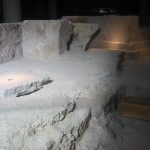THE TWO UNESCO CREATIVE CITIES PARTICIPATE IN THE VALÈNCIA ART & GASTRONOMY FESTIVAL 2023, FESTIN

The creative cities of UNESCO, Llíria and Dénia, will participate in the third edition of the Valencia Art & Gastronomy Festival, FestIN. The two municipalities will offer an innovative event that will bring together music and gastronomy.
A wind and percussion ensemble from the Llíria Music Conservatory will perform the soundtrack of the ‘Red Shrimp of Dénia’, by the composer Javier Pinto, with arrangements by the musician José Pastor. And all while chef Jordi Andrés, from the El Tresmall restaurant, prepares a dish with red shrimp as the main ingredient so that it can be tasted live.
The activity, organized by Turisme Llíria, will be held on February 12, starting at 12:00 noon, in the conservatory of the town of Edetana. Tickets to attend can be purchased on the App and municipal website at the price of 12 euros.
“Llíria, the Creative City of Music, and Dénia, of Gastronomy, have come together with this live concert and show cooking, which represents an explosion of senses from the Camp de Túria to the Marina Alta”, explained the mayor of Tourism, Paco Garcia.
“It is about offering a different experience through culture and gastronomy that symbolize the great values of these two municipalities,” he added.
Llíria is one of the venues for FestIN 2023, which joins the main one, Valencia, along with the towns of Riba-roja de Túria and Gandia. This festival is an initiative promoted by the Valencia City Council, through the Visit València Foundation, in collaboration with Turisme Comunitat Valenciana and the Tourist Board of the Valencia Provincial Council. It will take place from February 3 to 12 in different spaces that will combine art and gastronomy.








